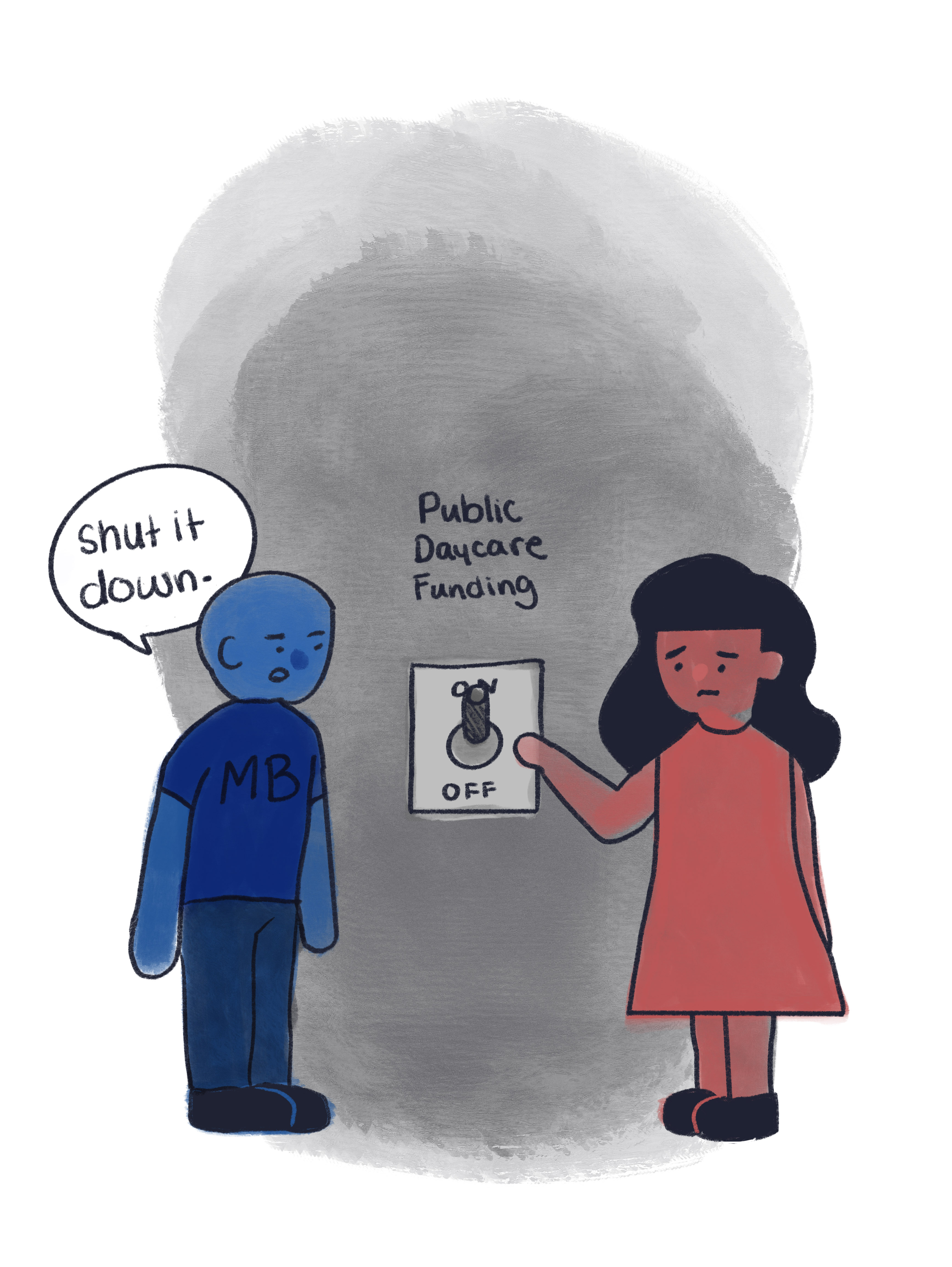As an ex-daycare worker, I have seen firsthand how hard early childhood educators (ECE) in the public sector work to keep their facilities afloat with the abysmal grants they receive. From getting creative with the way they budget to holding several fundraisers a year to pay for costly maintenance fees, public daycares are struggling to make ends meet in Manitoba, and so are parents.
With the onslaught of the pandemic-induced recession, the Progressive Conservative-led (PC) provincial government has doubled down on austerity measures, leaving the most vulnerable populations of Manitoba to immiseration. The most recent cuts to the enhanced operating grant in daycares should be of grave concern to low-income parents with children in early childhood education. Further, it could possibly signal first steps down a long road to privatization.
On Jan. 18, provincial officials announced that the enhanced operating grant, which serviced public daycares and provided low-income parents the option to send their kids to these facilities for $5 a day — amounting to $4,180 per daycare space annually — will be slashed to make room for a universal grant that will range from $1,045 to $2,090 per space annually, depending on attendance records.
The province hopes the reduced subsidies will create an equitable solution to extremely diverse and expensive child-care rates. However, daycare workers and ECEs have expressed some concerns. Cutting the grant will disperse needed subsidies for low-income parents across the daycare income spectrum. Laura Burla, the director of St. James Montessori School, noted this will likely inflate prices for recipients of the subsidies by roughly 108 per cent.
Parents who were paying approximately $5 a day for child care may have to make room in their budget for a daily maximum of $10.40. Although $10.40 a day seems like a small cost, keep in mind many families in Manitoba are living under the living wage line which sits at approximately $16.15 an hour. In juxtaposition to this, minimum wage workers make roughly $11.90 per hour — a glaring discrepancy that provides a small glimpse into the struggles of making ends meet in a province with a horrendous poverty reduction strategy.
Contrary to what the provincial government has claimed, these cuts and redistributions of funding will no doubt contribute to a less equitable child-care system. The PC administration has been interested in dismantling the public daycare system since its early years in power. In the late months of 2017, the PCs made clear the intent to focus on reducing “red tape” and introducing “new incentives for private investments in child-care spaces.” In other words, the province holds the privatization and deregulation of the daycare sector as a priority in its agenda rather than spending more to improve desperate public facilities. More concerning then is whether the government’s unwillingness to spend more on the deteriorating daycare system will lead to full-blown privatization efforts.
Privatization seems extremely likely considering some of the subsidiary policies the PCs have adopted over the years. The PC government embraced the portable child care benefit in 2019 — a demand-side subsidy program that provides funding directly into the hands of families who qualify. Although appearing to be a generous welfare policy, these subsidies can be extremely damaging to public facilities.
The intentions behind the subsidies are to provide parents “more choice” as to which daycare spaces they can select. However, due to long waitlists, many parents often take daycare spaces upon their availability, whether they are private or not. Hence, these subsidies are highly wasteful and informally subsidize the private sector while leaving public facilities out to dry.
Escalating privatization would be devastating to Manitoban families who require affordable child care. Unfortunately, private daycares set their own fees, whereas public daycares are held to a capped pricing system that varies depending on the levels of funding each facility receives. Should demand for daycare spaces rise, parents will either be left out in the cold or will be forced to pay the exorbitant rates that private facilities charge. In these cases, a demand-side subsidy is next to useless.
The PCs are tilting the competitive edge toward the private child-care sector. With the recent cuts to public facilities’ enhanced operating grant, low-income families could struggle to find a space they can afford. The most effective, equitable and cheapest way to create daycare spaces — while simultaneously making it cheaper for parents — is through direct investments in public facilities themselves.
These neglectful cuts serve as commentary to a dangerously parsimonious government that seems to value cost-reduction and privatization efforts over the welfare of low-income parents and their children.





